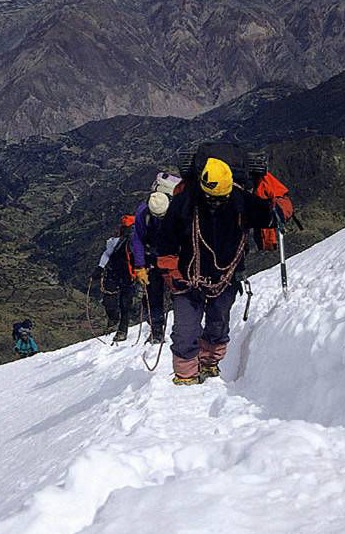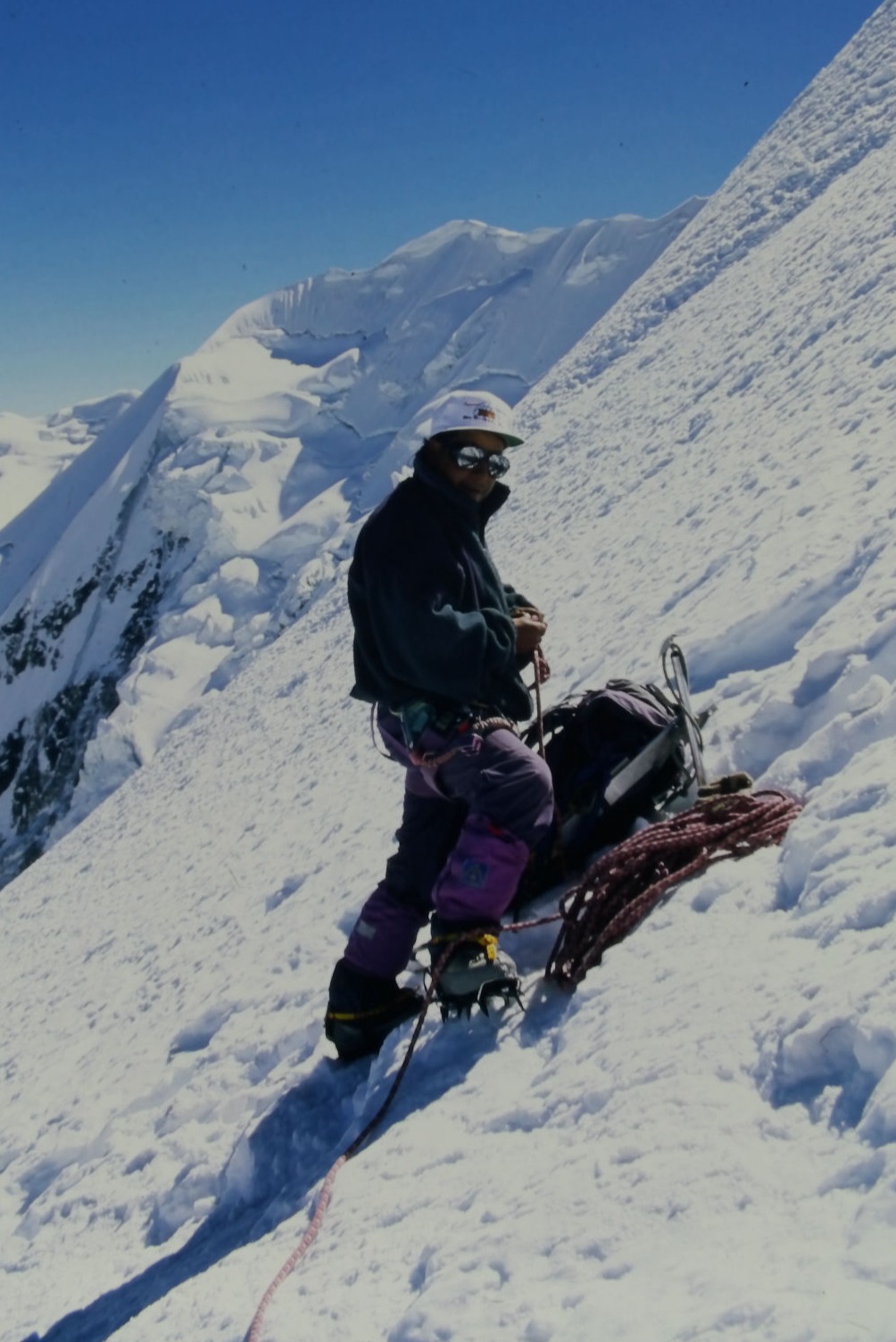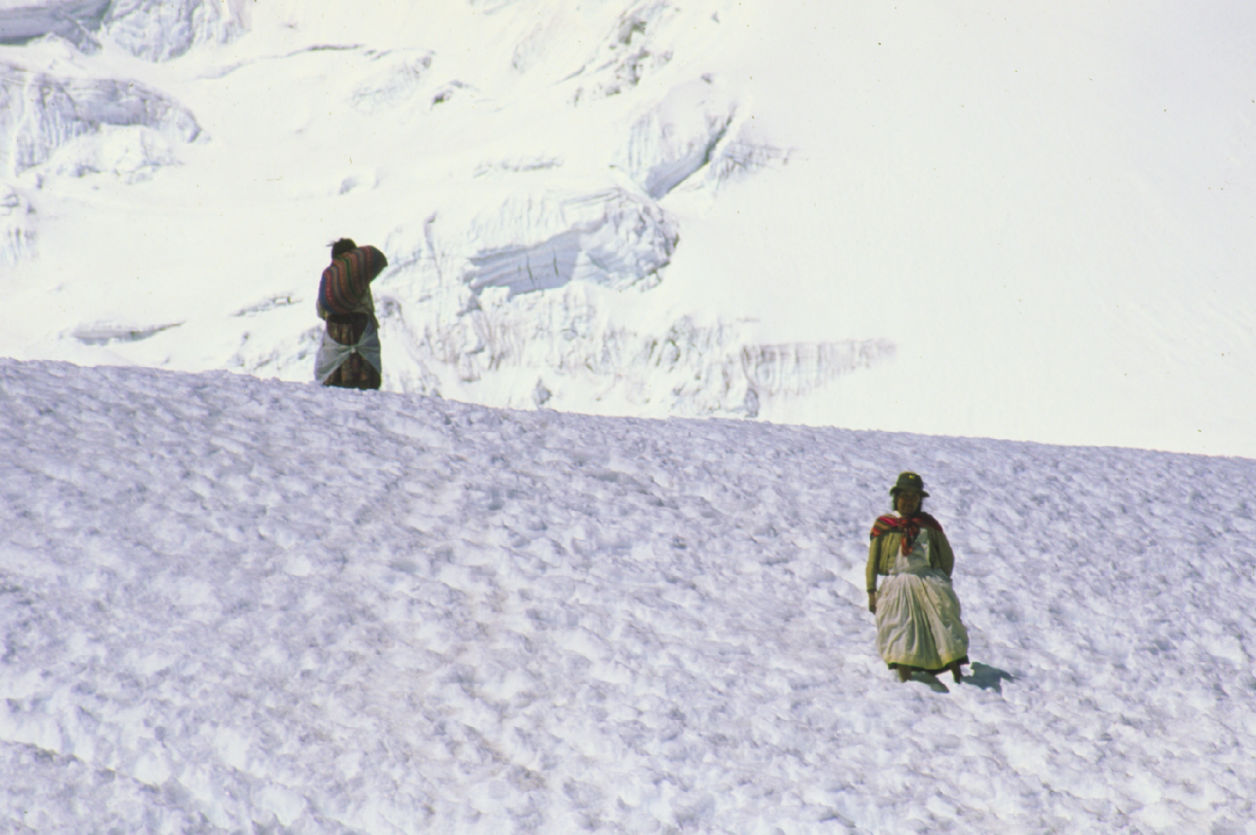
Climbing Nevado Illimani - Bolivia
Tropical Glacier-Climate Interactions
Glaciers are rapidly retreating along the entire tropical Andes. Our research shows this glacier retreat is closely related to the observed increase in high-elevation, surface air temperature in the region. While interannual variations in mass balance are tied to the El Nino- Southern Oscillation (ENSO) phenomenon, the long-term trend is driven by increased atmospheric greenhouse gas concentrations.
Our research suggests that glaciers in the inner tropics, may be most vulnerable to future warming while glaciers in the more arid outer tropics may persist, albeit in a smaller size, throughout the 21st century regardless of emission scenario.
Nonetheless many uncertainties persist, most notably problems with accurate snowfall measurements in the glacier accumulation zone, uncertainties in establishing accurate thickness measurements on glaciers, unknown future changes associated with local-scale circulation and cloud cover affecting glacier energy balance, the role of aerosols and in particular black carbon deposition on Andean glaciers, and the role of groundwater and aquifers interacting with glacier meltwater.

